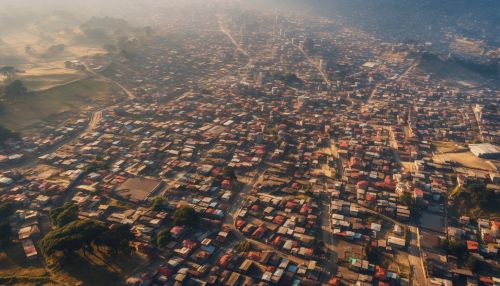The Role of Geoinformatics in Urban Heat Island Studies
Introduction
Geoinformatics, a discipline that combines geosciences and computer science, plays a significant role in the study of urban heat islands (UHIs). UHIs refer to urban or metropolitan areas that are significantly warmer than their surrounding rural areas due to human activities. The study of UHIs is crucial in understanding the impacts of urbanization on local climate and the environment. This article delves into the role of geoinformatics in UHIs studies, providing a comprehensive and detailed analysis of the subject matter.


Geoinformatics: An Overview
Geoinformatics is a multidisciplinary field that uses information technology to solve problems related to geography, cartography, geosciences, and related branches of science and engineering. It encompasses various tools and techniques, including Geographic Information Systems (GIS), Remote Sensing (RS), and Global Positioning Systems (GPS), which are instrumental in collecting, analyzing, and interpreting geographic data.
Urban Heat Islands: A Brief
Urban heat islands are urban areas that experience higher temperatures than their surrounding rural areas. This phenomenon is primarily due to the extensive modification of land surfaces in cities, which involves replacing natural vegetation with buildings and roads that absorb more heat. UHIs can have several adverse effects, including increased energy consumption, elevated emissions of air pollutants and greenhouse gases, compromised human health and comfort, and impaired water quality.


Role of Geoinformatics in UHI Studies
Geoinformatics plays a pivotal role in UHI studies, providing tools and methodologies for data collection, analysis, and interpretation. The following sections delve into the specific roles of geoinformatics in UHI studies.
Data Collection
Geoinformatics tools, particularly remote sensing and GIS, are extensively used for data collection in UHI studies. Remote sensing allows for the acquisition of data about the Earth's surface without physical contact, making it possible to study large urban areas efficiently. GIS, on the other hand, is used to store, manage, and analyze geographic data, facilitating the understanding of spatial patterns and relationships.


Data Analysis
Geoinformatics also plays a crucial role in the analysis of data collected in UHI studies. Tools like GIS enable researchers to analyze spatial data to identify patterns and trends in urban heat islands. For instance, GIS can be used to map the distribution of land surface temperatures across an urban area, helping to identify hotspots and areas that are most affected by UHIs.
Prediction and Simulation
Another significant role of geoinformatics in UHI studies is in prediction and simulation. Using geoinformatics tools, researchers can model and predict future UHI scenarios based on various factors such as urban growth patterns, climate change, and mitigation strategies. This predictive capability is crucial in informing urban planning and policy decisions aimed at mitigating the effects of UHIs.


Conclusion
Geoinformatics, with its advanced tools and methodologies, has significantly enhanced our understanding of urban heat islands. It has not only streamlined data collection and analysis but also enabled accurate prediction and simulation of UHIs, thereby informing mitigation strategies. As urbanization continues to increase globally, the role of geoinformatics in UHI studies is expected to become even more critical.
